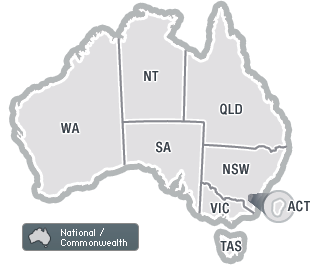Contract workers are often inexperienced and more susceptible to injury than full-time employees, WorkSafe WA's Jane Ardern has warned, in outlining seven ways to ensure contractors comply with safety rules.
Ardern, the regulator's education and information services manager, told the recent WorkSafe Forum in Perth that contractors new to sites were likely to be unfamiliar with their hazards and safety procedures.
She also said that many contract and transient workers were given different tasks to other team members, because of the short-term nature of their employment, and "may have reduced levels of supervision and assistance".
Further, organisations "face difficulties in ensuring that all tiers of subcontractors have the required training, despite their contractual commitment to compliance", Ardern said.
"Cost considerations often come first and many small subcontractors may not have the expertise to provide complex worker health and safety programs and often don't have enough training themselves to enforce safety."
According to Ardern, high levels of OHS compliance relied on a safety culture that included visible management commitment, hazard-prevention systems, a blame-free environment and the celebration of successes.
To perpetuate such a culture, she said, employers must:
- Check competency - integrate OHS compliance into recruitment processes for contracts and temporary employment. Encourage labour-hire agencies and contractors to reinforce safety values, to ensure consistency across industries, and check on agencies' safety policies and recent OHS performance;
- Clearly define roles and responsibilities - ensure prospective workers have the necessary knowledge and skill and understand what is expected of them in regards to workplace safety. Show them all relevant policies, procedures and permit systems;
- Provide information, instruction and training - allow labour-hire agencies access to the workplace and relevant documentation, and ensure health and safety information is provided to workers in their language. Make temporary workers feel like part of the team, and train them to self-manage safety issues;
- Co-operate, consult and co-ordinate - conduct regular meetings, liaise between contractor groups and provide "consistent points of contact" on health and safety issues;
- Assess the risks - conduct risk assessments in consultation with contractors, and determine how each parties' work could affect the safety of others;
- Monitor OHS performance constantly - check whether risk assessments are up to date and that control measures are working. Ensure greater risks are more closely monitored, and conduct periodic checks to ensure contractors are performing work as agreed. Involve HSRs and other team members in the identification of hazards; and
- Investigate all incidents - investigate all injuries, work-related ill health and near misses to determine what went wrong and why the incidents were not prevented. Review all work when it is completed to see if the safety performance could have been better, and share all lessons learnt from investigations and monitoring with the entire workforce.



